‘Covid is a hoax! The vaccine alters your DNA!’ In Michael Ho’s Echoes from the Void (2022) a figure stands alone in a forest at twilight. Words cascade from his mouth through the dripping trees towards the dark jagged entrance of a cave. Accompanied by metallic chimes, the reverberations echo hauntingly, nonsensically, through the underground recesses. In the moonlight a stream of bright white pearls trickles down the rocks like strange alien spawn.
Ho’s video is one of the works on display in ‘Hollow Earth: Art, Caves and the Subterranean Imaginary’, a powerful and thought-provoking new exhibition at Nottingham Contemporary. Ho’s cave is simultaneously ancient – a place of memory and myth, reality and illusion – and an analogue for the echo chambers of contemporary social media filled with distortion, rumour and disinformation including Sinophobic conspiracy theories. Elsewhere in the exhibition of 150 works, caves appear as wombs, graves, canvases for art, religious sites, domestic spaces, storage facilities, the domain of gods and monsters, places both of refuge and danger.
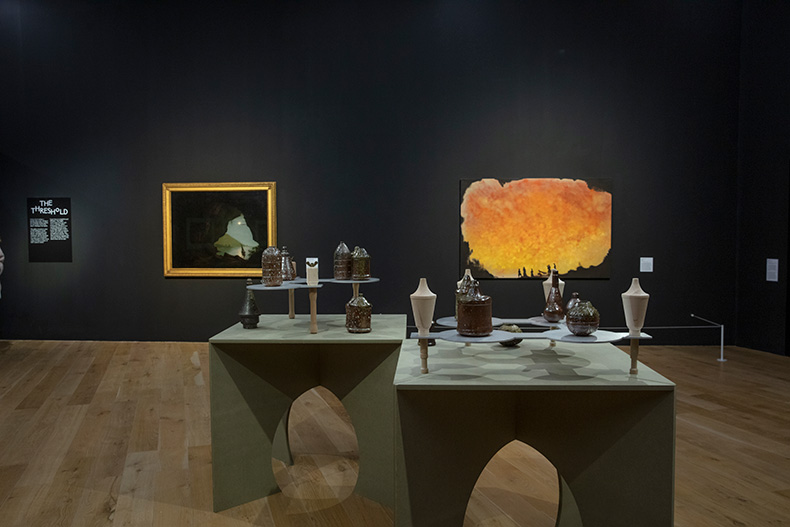
Installation view of ‘Hollow Earth: Art, Caves & The Subterranean Imaginary’ at Nottingham Contemporary (2022)
Nottingham is itself a city of caves and the exhibition takes inspiration from this. Beneath the streets lies a network of more than 800 spaces hand-carved out of the sandstone rock in a process that has been going on since at least the 9th century. Older caves are found a little further north at Cresswell crags, naturally occurring limestone cavities visited by humans since at least the Paleolithic. As a species we have always sought out the underlands, the hollow places.
The oldest dated piece on display is a page from Athanasius Kircher’s work of natural history Mundus Subterraneus (1665), an illustration of his belief that the interior of the Earth was criss-crossed with interconnecting channels of fire. The newest pieces include Emma McCormick-Goodhart’s Exuviae (2022), a ‘scent climate’ evoking the smell of the Lascaux cave complex in France around 17,000 years ago when the famous paintings of aurochs, horses and deers were being inscribed on its walls (represented by base notes of wet clay and moonmilks, apparently). There are works from, among others, Joseph Wright of Derby, René Magritte and Robert Smithson, and selections of historical documents, drawings and figurines from Nottingham’s city archives.
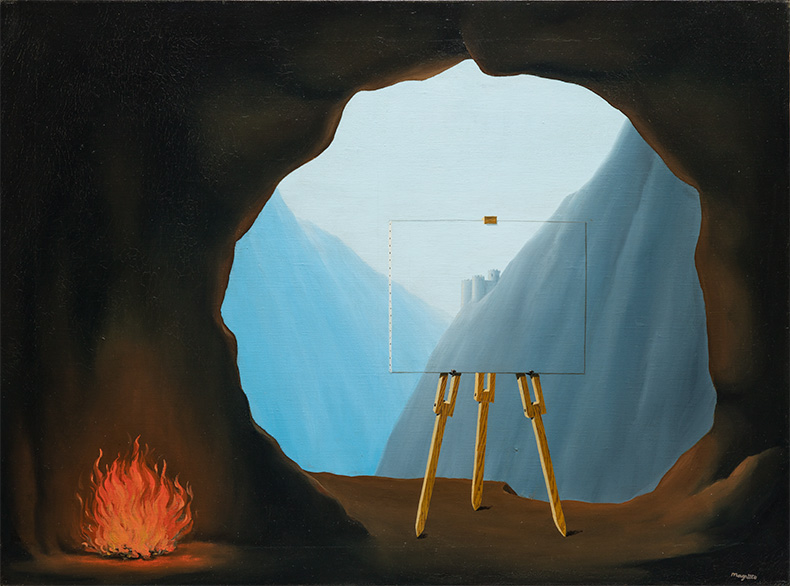
La Condition Humaine (1935), René Magritte. © ADAGP, Paris and DACS, London 2022
In a section of titled ‘The City’, colour photographs by The Center for Land Use Interpretation show underground American business parks housed in former limestone mines; strip lighting and cheerfully bland corporate signage are set against the ancient rocks, the numinous quality of the cave coming up against modern commercial America. Elsewhere we encounter doomsday bunkers, data farms and storage sites. Caves sheltered our ancestors and now we turn to them again for survival. Frank Heath’s quietly funny On the Beach, Episode 3 (2015) shows footage of the Svalbard Global Seed Vault – with its duplicates of seed varieties intended to safeguard the world’s food plants in the event of a global crisis – and overlays this with a telephone conversation in which a caller, put through to customer services, recounts an apocalyptic vision experienced in a grocery store. ‘I suggest maybe a therapist or a psychiatrist or something…’ the store representative says a little helplessly. ‘It’s not something that a grocer can break down for you.’
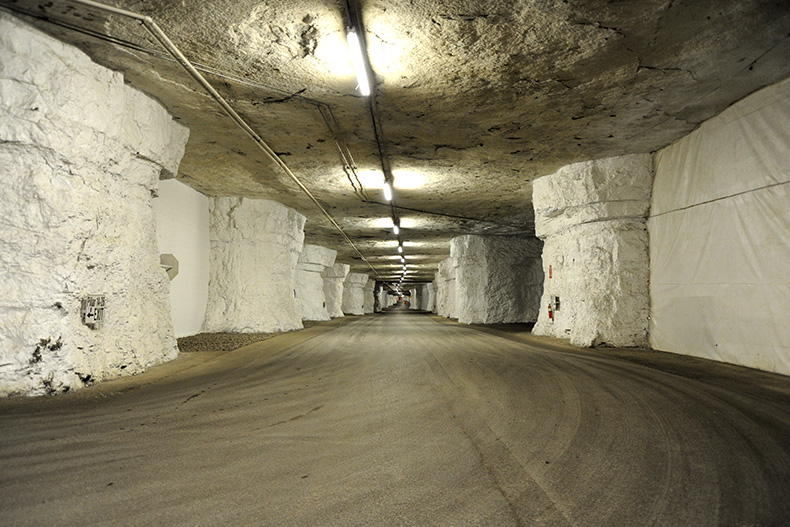
Gateway Commerce Center, Wampum, Pennsylvania. Photo: Center for Land Use Interpretation
Caves bring us closer not just to human but to Earth history – to the deep time of rock and stone. When we travel underground we travel back in time; the farther we go, the older (usually) the rocks. A deep or geological timescale asks us to consider time that stretches backwards and forwards far beyond the temporal range of our species, and to be aware of geological processes operating at rates that appear unfeasibly slow in the context of a single human lifetime. In a limestone cave, for example, a stalagmite typically might add a mere centimetre of stone over a century. Such concepts resonate with the work of Ilana Halperin whose Rock Cycle (2021) appears in the exhibition’s final room. Arranged on the gallery floor are a selection of small pastel-coloured objects. Things ridged and curved, glinting in the spotlight as though coated in icing sugar. These turn out to be old tiles and bricks once made on the Isle of Bute and sent by Halperin to the Fontaines Pétrifiantes de Saint Nectaire. Here, subterranean streams deliver a rapid accretion of tufa, a form of limestone, in a process similar to the formation of stalagmites.
This is the cave as cradle for what Halperin describes as a hybrid geology. A geological process on a human timescale. A new way of being in the world.
‘Hollow Earth: Art, Caves & The Subterranean Imaginary’ is at Nottingham Contemporary until 22 January 2023.
Unlimited access from just $16 every 3 months
Subscribe to get unlimited and exclusive access to the top art stories, interviews and exhibition reviews.

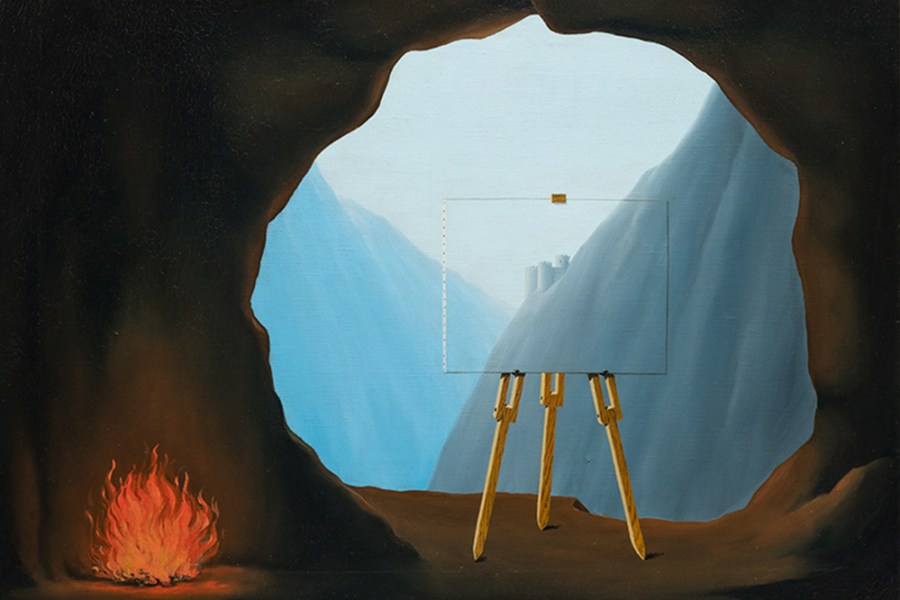
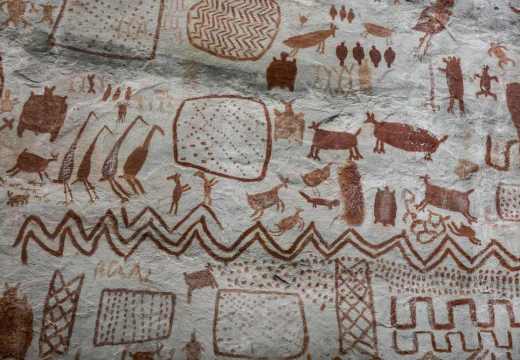
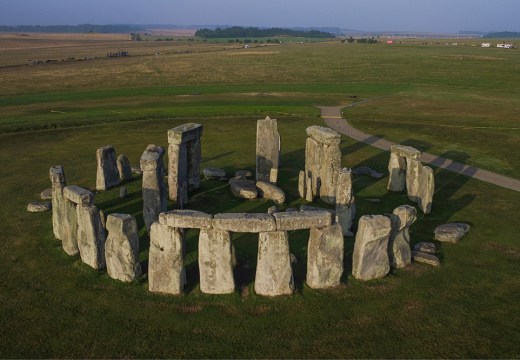
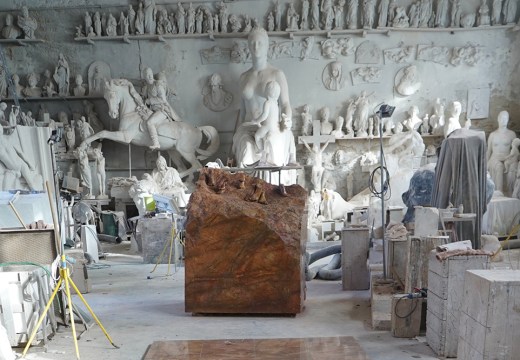









![Masterpiece [Re]discovery 2022. Photo: Ben Fisher Photography, courtesy of Masterpiece London](http://www.apollo-magazine.com/wp-content/uploads/2022/07/MPL2022_4263.jpg)
It’s time for the government of London to return to its rightful home